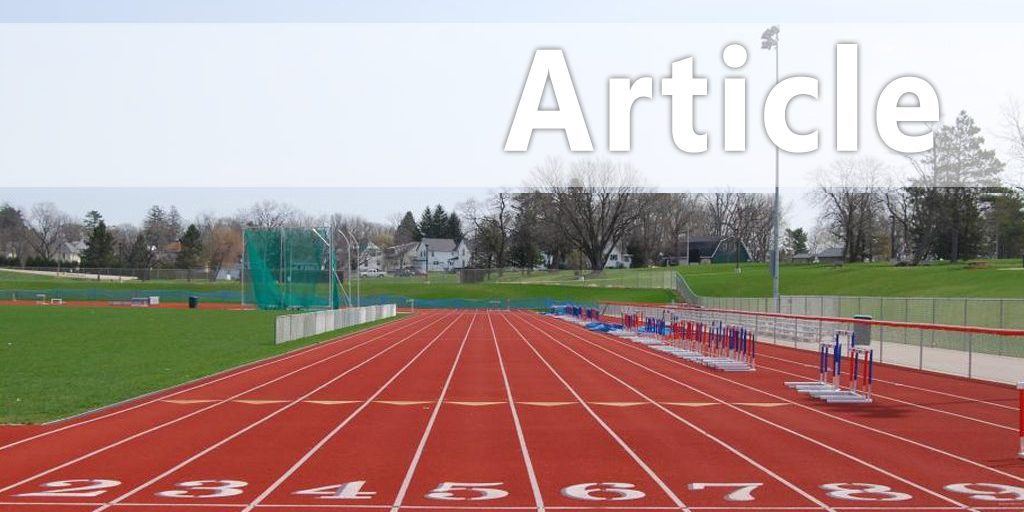| A Recruiting Blueprint The Art and Science behind Successful Collegiate Recruiting |
| By: Dennis Newell
Originally Published in Techniques Magazine Provided by: USTFCCCA   I decided to gather information from coaches around me that I trusted and respected. I needed to find out what successful recruiting actually was before I could try to accomplish it. Once I found general themes I made a list of steps that were important and necessary, in the collegiate recruiting process. These steps can be followed in a sequential order to help keep me on track, organized and accountable with my recruiting. The first step is to identify the recruits that I want to join my university and program. I start by identifying their athletic abilities in cross country and track & field events that are important to my program and in competitions that show accurate data of their athletic abilities. I look through conference, district, regional and state meet results and highlight those I want to contact in the future. Once I have identified the recruits I want to contact, I look up the address of the school they compete for and enter that information into a spreadsheet. I now have a comprehensive list and means of connection with the majority of the high school recruits I want to contact. The next step for me is to make contact with these recruits. This can sometimes be the most difficult task of the recruiting process. I send out a recruiting questionnaire to each high school with the recruit's name on it. I call the high school and ask them to hand deliver the recruiting questionnaire to the recruit. The recruiting questionnaire is a simple form with pre-paid postage on the back and is the size of a postcard. It requests information from the recruit including mailing address, email, cell phone, GPA, ACT/ SAT score, etc. Once I have the recruit's questionnaire, I enter the information into the spreadsheet. Once a month, I submit this spreadsheet to our admission's department to add these recruits to our university's global database. The university sends out a vast amount of information on a scheduled basis; helping get information into the recruit's hands. If I do not receive the recruiting questionnaire back in a timely manner I contact their coach, send a private message to them on Facebook, or reach out by some other means. There are many creative ways to get a cell phone number or email for a recruit. I use multiple methods of getting in touch: text, email, recruiting software, social media (private messages only), hand-written letters and notes, phone calls and face-to-face meetings through home, school and competition visits. Each contact method needs to be used in an appropriate manner based on the specific information I am trying to deliver and get back from the recruit. The method of contact also should be appropriate for the relationship that I have at that point in the recruiting process. I typically follow this order of contact for the first two to four weeks of communication: 1. Introduction: Mail a recruiting brochure, hand-written note and business card I continue to communicate using email or mail to deliver information, texts to set up phone calls and phone calls to follow up on email or mail information and answer questions and concerns until I build a high comfort level with the recruit. Once a comfortable level of communication is established and developed, I progress the communication into a home and/ or campus visit. I strive to make contact early and often in the recruiting season and to establish which methods of contact work best for each recruit. The next step is to inform the recruits. I want to get the right information to my contact. That information can be delivered in several different ways (as shown above). Much like using appropriate contact methods, using appropriate delivery methods of the information is vital, as is delivering the 'right' information. If I am proactive in my recruiting efforts and informing the recruits, then I have more control in delivering the information I want them to have in their possession. I always have a reason for communication; to inform them or give them information about our university and program in a positive way. I keep my communication short, simple, to the point and meaningful everytime. I deliver the information as efficiently as I can. From the first contact to either a commitment or walking away from my university and program, I am continually trying to create the best possible experience I can, from beginning to end. I follow the above sequential steps for the most part, but I am always adding the human touch to make sure the entire process is as genuine as possible for the recruit and their support group. I truly believe that if I can create the best possible experience for them I will have a better chance of convincing them to join my university and program; even if other variables are not exactly what they are looking for. I am constantly trying to find the best package for each and every recruit. A package can oftentimes be financial. But, a package can also have nothing to do with finances. As a coach who is constantly recruiting, I must first listen to the needs before I present the resources that I have available. The most important variables and resources are the ones that they see as being important. I look for every academic, athletic, loan and need-based aid that is available. I have a responsibility to make the best financial package available. I am recruiting to my university and program, and part of that process is creating the most affordable option possible. Recruits are often looking for several different variables in their collegiate experience including academic, athletic, social, religious, proximity to and from their parent's home, the conference or division or association the university belongs to (NAIA/ NJCAA/ NCAA/ etc.), etc. I try to find out what 'package' they are looking for, and then attempt to develop a package that suits their needs.  Once I feel the recruit has received all the information they need to make an informed decision, and they have no more questions or concerns about our university and program, I bring up a timeline on making a decision to either join my university and program or walk away. If the first five steps are followed to the best of my ability; then I have done my best to lead the recruit to join my program. However, keep in mind, creating the best opportunity at your university and within your program is not always enough to get a commitment. Some will be looking for something else in their collegiate experience. I understand that I do not have everything to accommodate every single recruit out there. But, if they are looking for a place with the resources I have, then I want to make sure I do my best to get their commitment. Identify, Contact, Inform, Experience, Package and Decision. These six steps have helped me stay on task in a sequential order in my recruiting duties. I use these guidelines while allowing for my own personal touch to be integrated into the process. I have a set of tools to use from my university and program, and it is my job to use those tools in an appropriate manner. Most universities and programs are different We do not all have the same number of scholarships, the same number of coaches on staff, the same facilities, etc. I understand that I recruit against other coaches and programs with different assets and different challenges. I decided long ago that I cannot focus on what I do not have and what others do have. I need to use the resources available to me to get recruits to my university and program. HERE ARE SOME KEY POINTS TO THINK ABOUT IN THE RECRUITING PROCESS: I AM "SELLING A PRODUCT," SO I BETTER KNOW MY PRODUCT MY UNIVERSITY AND PROGRAM HAS A NICHE, KNOW IT AND OWN IT I DESIGN A "RECRUITING SCHEDULE" JUST LIKE I WOULD DESIGN A TRAINING PLAN FOR MY CURRENT STUDENT-ATHLETES I MAKE IT MY JOB TO GET THE RECRUIT THROUGH THE UNIVERSITY ADMISSIONS AND NCAA ELIGIBILITY PROCESS RECRUITING INTERNATIONAL STUDENT-ATHLETES I USE SOCIAL MEDIA TO SHOWCASE MY UNIVERSITY AND PROGRAM I SET RECRUITING GOALS THAT CHALLENGE MYSELF VISITS: COMPETITIOW HOME / CAMPUS I MAKE IT GENUINE BY ADDING THE HUMAN TOUCH I DON'T TAKE IT TOO PERSONAL I understand that I am recruiting into my niche. I need to be open to the idea that my strengths are not the right fit for every recruit. Again, I don't want every recruit, I want the 'right' recruits. I HANDLE MYSELF LIKE A PROFESSIONAL IN ALL SITUATIONS I NEVER TALK ABOUT OTHER PROGRAMS POORLY BE CREATIVE, BE PATIENT, BUILD RELATIONSHIPS; RECRUITING TAKES EFFORT, CONSISTENCY AND TIME MISTAKES My recruiting philosophy is fairly simple. I focus on becoming better at the process of my daily tasks, instead of the outcomes. I follow sequential steps in the recruiting process and work hard to showcase the resources I have available to me with a genuine delivery. ------------------------------------------------- |







